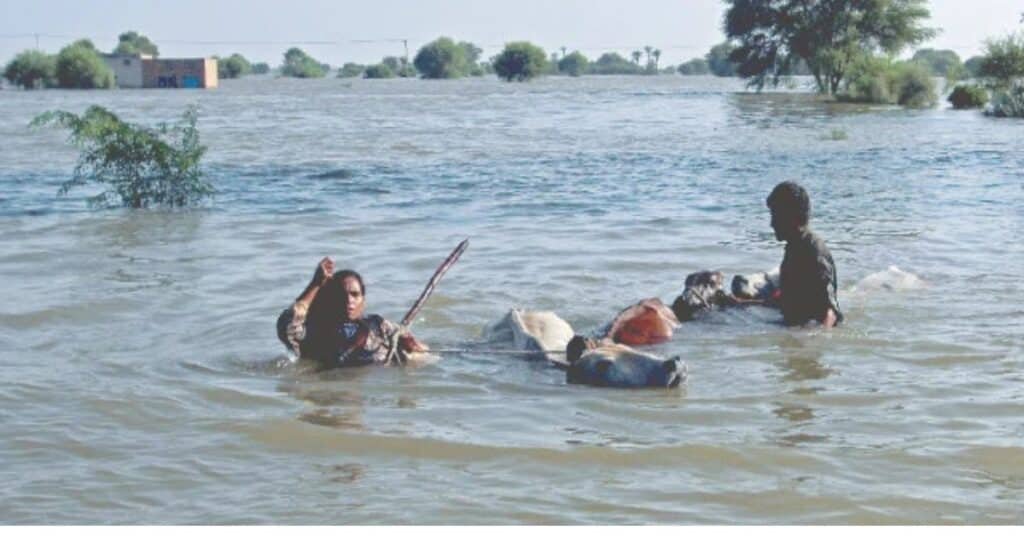ISLAMABAD (Kashmir English): As the country has been reeling from devastating floods caused by one of the most intense monsoon seasons in recent history, weather officials have warned of another spell of rainfall from September 16 to 18.
The new spell is expected to affect Azad Jammu and Kashmir, northern and central Punjab, and parts of Khyber-Pakhtunkhwa province.
Fresh rain spell to be of moderate intensity
Unlike the August downpours, the fresh spell is expected to be of moderate intensity with the authorities urging local administrations to remain on high alert.
Meanwhile, officials said that districts including Multan, Muzaffargarh, Liaquatpur, and Rahim Yar Khan face heightened risk of flooding as India continues to release high volumes of water into downstream rivers.
The Provincial Disaster Management Authority (PDMA) has said that protective embankments at Basti Baharan near Multan have collapsed, while a deliberate cut was made on the Uch Sharif road to protect the city from inundation.
The move, however, left area villages — Mouza Jhanbo, Nooraja Bhatta, Kotla, Bahadurpur, and Sabra — badly affected.
The situation at Head Panjnad remains critical, with a massive flood wave of 607,000 cusecs flowing through. Nearly 70 percent of Alipur was submerged earlier, causing widespread devastation.
In Farid Shah near Qabulah, thousands of acres of crops have been destroyed and road links cut off, forcing residents to evacuate by boat.
In Akbar Shah area of Lodhran, over 2,000 houses are underwater, with crops of rice, cotton, maize, and sesame completely destroyed.
The Arifwala region is also struggling against high floods in the Sutlej River, where displaced families are sheltering in makeshift camps.
River water has also entered localities in Tehsil Liaquatpur Narwala (Rahim Yar Khan) that had been dry for decades, creating chaos and forcing mass evacuations.
At Head Panjnad on Chenab River, the flood has surged past 668,000 cusecs, moving rapidly towards Simka Chachran. Despite earlier signs of receding, the water level is rising again.
The Meteorological Department has reported a significant rise in water levels at the country’s major reservoirs.
Tarbela Dam has reached its maximum capacity of 1,550 feet, while Rawal Dam stands at 1,751.80 feet – almost at its full capacity of 1,752 feet.
Mangla Dam is 92 per cent full at 1,234.60 feet, and Simli Dam has reached its maximum storage of 2,315.25 feet.
The floodwaters that caused havoc in Punjab, have now entered the Indus River, causing a rapid increase in water levels at the Guddu and Sukkur barrages.
The rising water levels in the Indus River inundated several localities in the kachha (riverine) region, with floodwaters entering hundreds of villages.




